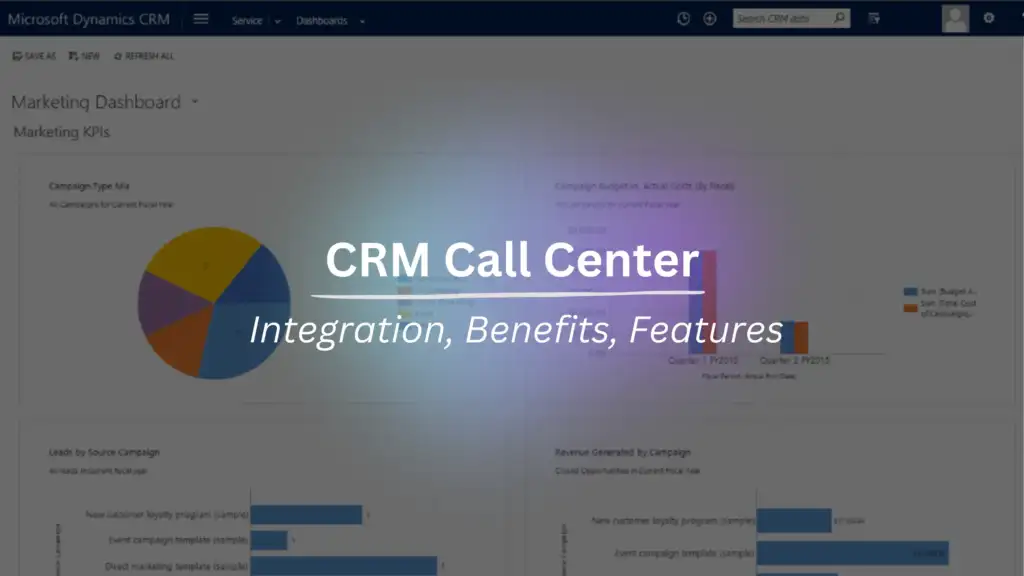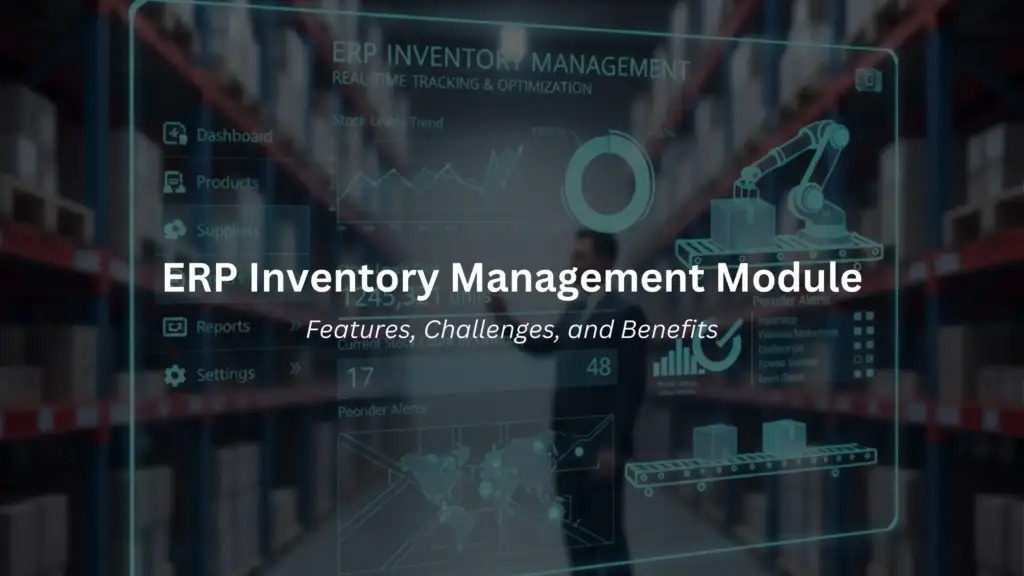Introduction
As a Microsoft Partner, Gem365.ca is thrilled to present the latest updates from the Microsoft Business Central 2024 Release Wave 2. This release brings a plethora of new features designed to enhance your business operations, improve customer engagement, and streamline your workflows. In this blog post, we’ll delve into the most useful features of this update and how they can benefit your business.
The Microsoft Business Central 2024 Release Wave 2 is packed with innovative features aimed at improving the efficiency and effectiveness of business processes. This update focuses on enhancing financial reporting, subscription billing, and sustainability reporting, among other areas. Let’s explore these features in detail.
User Groups feature has been replaced by Permission Sets.
In Microsoft Dynamics 365 Business Central 2024 Release Wave 2, Microsoft has made a significant change to how user access and permissions are managed. The traditional User Groups feature has been replaced by the more modern and flexible Permission Sets. This shift enhances the administration of user roles and security in Business Central, aligning it with contemporary best practices and providing administrators with a streamlined and efficient toolset.
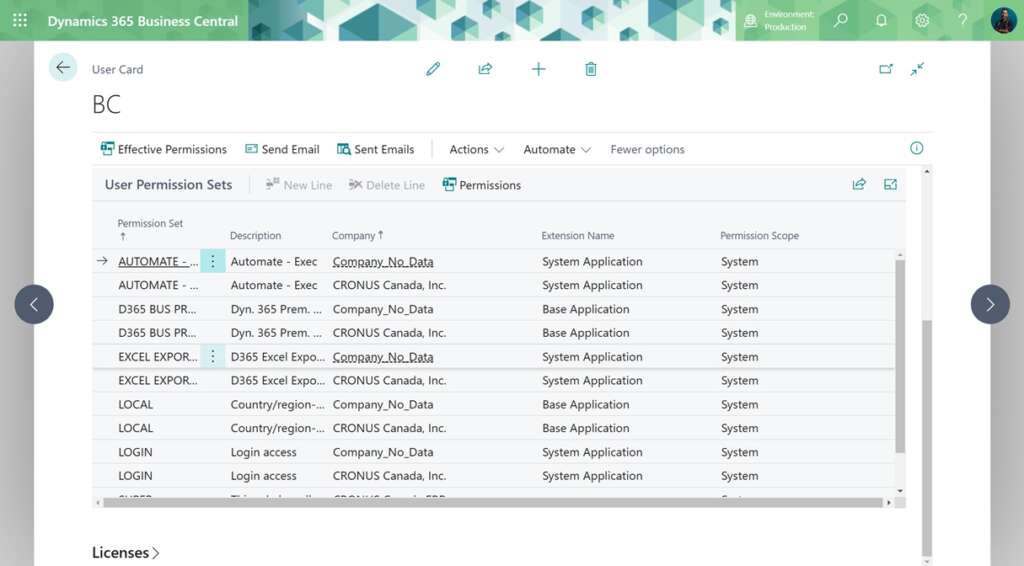

Key Changes
Simplification of Permissions Management
- In earlier versions, User Groups were used to organize permissions for groups of users. However, this sometimes led to redundancy and confusion when managing large organizations.
- Now, the Permission Sets feature allows administrators to directly assign roles and permissions to individual users or groups in a more granular and intuitive way.
Enhanced Flexibility
- Permission Sets enable administrators to create tailored access configurations that align closely with an organization’s specific needs.
- Users can be assigned multiple Permission Sets, and the system will consolidate them to define their access rights, ensuring clarity and control.
Easier Maintenance
- With Permission Sets, it’s easier to update and maintain security configurations as organizational structures evolve. Any changes to a Permission Set automatically propagate to all users assigned to it, reducing administrative effort.
Integration with Azure AD and Security Enhancements
- Permission Sets integrate seamlessly with Azure Active Directory (Azure AD) for more robust security and alignment with Microsoft’s broader ecosystem.
- This integration supports role-based access controls (RBAC), which are widely recognized as a best practice in enterprise applications.
Benefits
- Improved Clarity: Administrators now have a single, cohesive framework to manage access rights, minimizing complexity.
- Time-Saving: Updates to permissions can be implemented more quickly and efficiently.
- Stronger Security: The shift to Permission Sets ensures a more secure, consistent application of access controls.
Allow more than one user to post warehouse entries at a time
The feature shown in the image, “Allow more than one user to post warehouse entries at a time”, is a valuable enhancement in Microsoft Dynamics 365 Business Central. It addresses a common limitation in warehouse operations, where traditionally, only one user could process and post warehouse entries to avoid conflicts or data inconsistencies.


Key Improvements
Simultaneous Posting:
- With this update, multiple users can now post warehouse entries concurrently. This significantly increases operational efficiency, especially in busy warehouses where quick data processing is crucial.
Reduced Bottlenecks:
- In previous versions, users often faced delays waiting for others to complete their postings. This feature eliminates such bottlenecks, enabling smoother workflows.
Enhanced Collaboration:
- Team members can work simultaneously on warehouse tasks, such as posting receipts, shipments, and inventory adjustments, without worrying about access conflicts.
Improved System Performance:
- The update ensures that the underlying system architecture handles concurrent posting while maintaining data integrity and performance, thanks to enhancements in record locking and transaction management.
Real-World Benefits
- Faster Turnaround Times: Businesses can process orders, shipments, and other warehouse operations faster, improving customer satisfaction.
- Scalability: Larger teams can collaborate effectively without being limited by system constraints.
- Minimized Errors: The system manages concurrent postings intelligently, reducing the likelihood of manual coordination errors.
Practical Scenarios
- During peak seasons, multiple warehouse operators can process incoming shipments and outgoing deliveries simultaneously, ensuring that the warehouse operates at maximum capacity.
- Teams can work in parallel on inventory reconciliations or adjustments, ensuring minimal downtime.
This feature exemplifies Microsoft’s focus on making Business Central more agile and scalable for growing businesses.
Enhanced Financial Reporting
One of the standout features of this release is the addition of five new financial reports. These include balance sheets, revenue reports, and income statements. These reports provide more examples and templates that businesses can use to customize their financial reporting. The new row definitions, column definitions, and formulas offer more ways to view and analyze Business Central data, making financial management more intuitive and comprehensive.
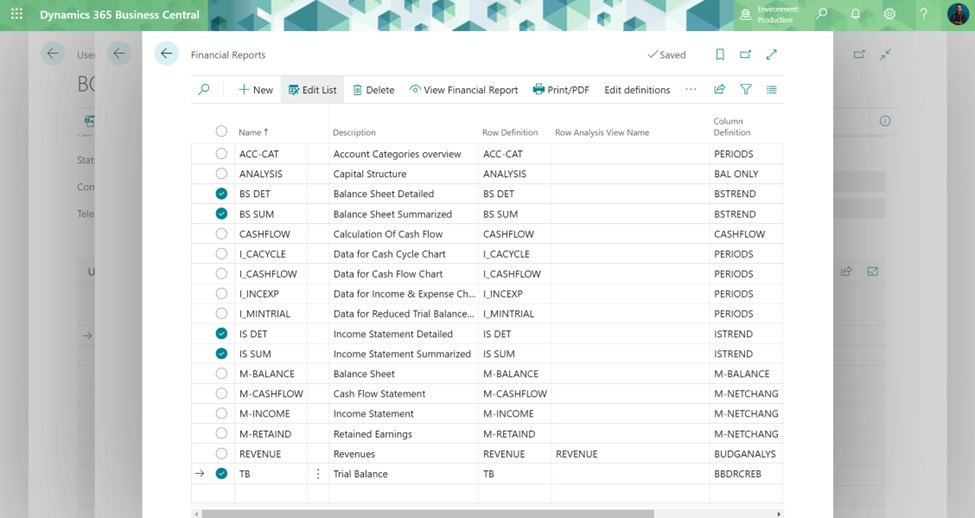

The enhanced financial reporting capabilities allow businesses to gain deeper insights into their financial health. With the ability to customize reports, businesses can tailor their financial analysis to meet specific needs. This flexibility is crucial for making informed decisions and driving business growth.
Four New Excel Report Layouts
The release adds four Excel report templates, currently available in preview, designed to address specific reporting needs which results in a excel report like this with several tabs and ability to report based on dimensions:
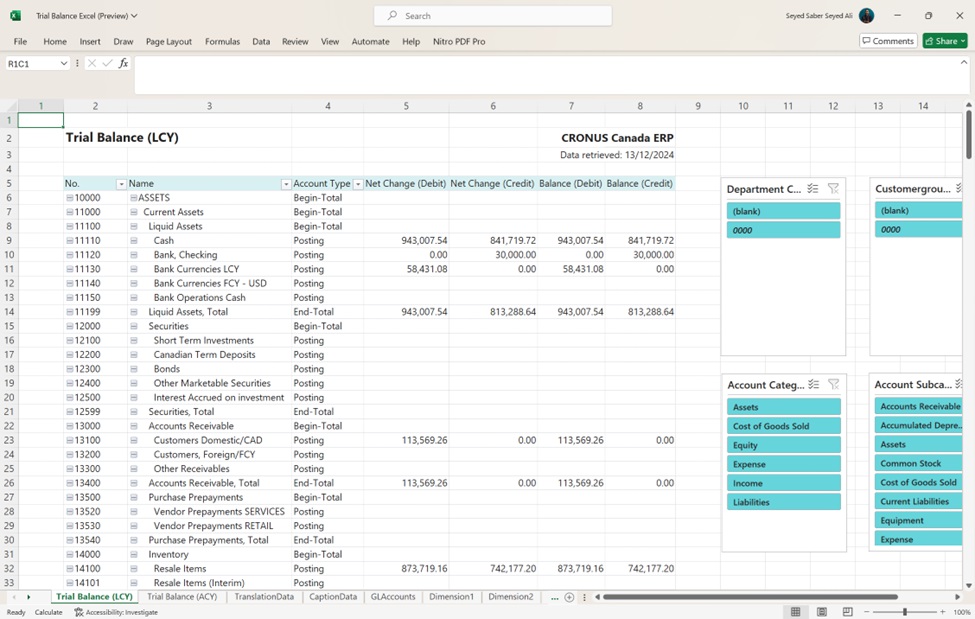

- Consolidated Trial Balance: Provides an overview of financial data from multiple entities, enabling easier consolidation for group reporting.
- Fixed Asset Details: Offers a detailed breakdown of fixed assets, including acquisition dates, costs, and depreciation.
- Fixed Asset Analysis: Delivers insights into asset performance, usage, and value trends, supporting informed decision-making.
- Fixed Asset Projected Value: Forecasts the future value of assets based on depreciation schedules, helping in long-term planning.
- Excel Integration
- These reports are generated in Excel, making them easy to share, customize, and analyze. Users familiar with Excel can leverage its advanced tools, like formulas, charts, and pivot tables, for deeper insights.
- Preview Mode
- The reports are available as a preview, giving users a chance to explore and provide feedback before full implementation. This ensures the final versions meet user requirements.
- Focus on Consolidation and Fixed Assets
- The consolidation reports simplify financial reporting for businesses with multiple legal entities.
- The fixed asset reports provide clarity on asset management, helping businesses optimize their resource usage.
Benefits for Businesses
- Improved Efficiency: Automating report generation reduces manual effort and ensures data accuracy.
- Enhanced Decision-Making: Access to detailed and consolidated financial insights helps businesses make informed decisions.
- Flexibility: Excel’s familiarity and flexibility allow users to adapt reports to their specific needs quickly.
- Simplified Group Reporting: Consolidated trial balance reports save time in preparing group financial statements, especially for organizations operating across multiple regions.
Practical Applications
- Multi-Entity Businesses: Consolidated reports simplify reporting for companies with multiple subsidiaries.
- Asset-Intensive Industries: Businesses with significant investments in fixed assets can better track and plan for asset maintenance and replacement.
- Financial Planning: Projected asset values assist in long-term budgeting and investment strategies.
This feature demonstrates Microsoft’s commitment to enhancing user productivity and reporting capabilities in Business Central. By integrating powerful Excel-based layouts, businesses can efficiently manage their financial reporting and asset tracking while leveraging tools they already know and trust.
Customer Contract and Subscription Billing Module
The introduction of a new module for subscription billing is a game-changer for businesses that offer subscription-based services. This module simplifies the management of recurring billing cycles, automates invoicing, and provides detailed analytics to help you track your subscription revenue. The module is extensive, with numerous options, menus, and windows that need to be configured. This feature is particularly beneficial for businesses looking to scale their subscription offerings.
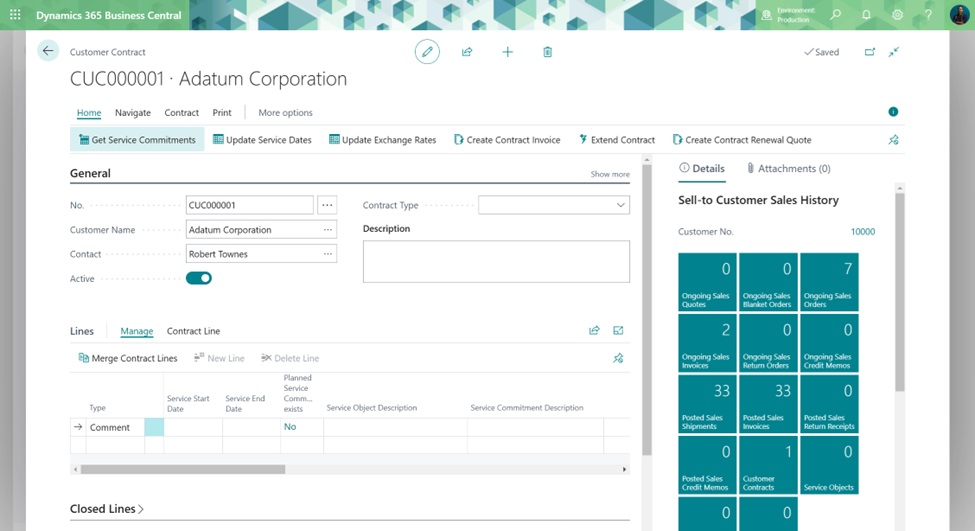

With the subscription billing module, businesses can streamline their billing processes, reduce manual errors, and improve cash flow management. The detailed analytics provided by this module enable businesses to monitor subscription performance, identify trends, and make data-driven decisions to optimize their subscription offerings.
The feature highlighted in the image, “Manage subscription billing and revenue and expense recognition”, is a key addition to Microsoft Dynamics 365 Business Central. It provides robust functionality to handle recurring billing, contract management, and financial reporting for subscription-based business models.
Key Features Explained
Contracts for Recurring Billing
- You can create and manage contracts for items and services that require recurring billing. This is ideal for businesses offering subscriptions or long-term service agreements.
Flexible Billing Schedules
- Billing schedules are customizable with parameters that cater to diverse scenarios, such as monthly, quarterly, or annual billing cycles. This flexibility ensures the system aligns with real-world business needs.
Usage-Based Billing
- The system supports billing based on usage, enabling businesses to charge customers according to consumption levels, such as hours, units, or other metrics.
Automated Billing
- Billing processes are automated, reducing manual intervention and ensuring timely invoicing. This boosts efficiency and minimizes errors in recurring billing operations.
Deferral Integration
- Revenue and expense deferral capabilities allow for accurate financial reporting by recognizing revenue and expenses over time, rather than at a single point.
Revenue Recognition
- Revenue recognition is aligned with billing schedules, ensuring compliance with accounting standards like ASC 606 or IFRS 15. This is critical for maintaining transparency and accuracy in financial reporting.
Contract Updates
- The system allows updates to contract parameters, such as price changes or extended service durations, ensuring flexibility in managing ongoing customer relationships.
Standard and Power BI Reports
- Comprehensive reporting tools include standard reports and Power BI integration. These reports cover contracts, customers, billing schedules, recognized revenue, future billing dates, and more, providing valuable insights for decision-making.
Real-World Applications
- Subscription Services: Businesses offering SaaS, memberships, or regular services can manage all billing and financial aspects in one place.
- Utility Providers: Companies with usage-based billing models can handle consumption tracking and invoice generation seamlessly.
- Complex Contracts: Organizations with multi-year agreements can automate renewals, adjustments, and revenue recognition without manual effort.
Benefits for Businesses
- Streamlined Operations: Automation and integrated billing save time and reduce operational costs.
- Financial Accuracy: Built-in revenue recognition and deferral ensure compliance with accounting standards.
- Scalable Solution: Whether handling a handful of contracts or thousands, the system scales effortlessly.
- Informed Decisions: Detailed reports and analytics help management stay on top of financial and operational performance.
This feature is a powerful tool for any organization managing subscription or recurring revenue models, enabling them to grow and adapt efficiently while maintaining compliance and operational control.
Replenish items for projects
The ” Replenish items for projects “ feature introduced in Microsoft Dynamics 365 Business Central Version 25 (2024 Release Wave 2) is a highly anticipated improvement designed to enhance project management efficiency and ensure resource availability for project execution.
Key Functionality
Simplified Replenishment Process
- This feature streamlines the process of replenishing items required for projects. Users can now easily manage inventory for project-specific needs, ensuring that required materials are available when needed.
Direct Link to Projects
- The replenishment process is directly tied to specific projects, enabling a more focused and accurate approach to managing material requirements and allocations.
Integration with Planning Tools
- The feature integrates seamlessly with planning worksheets and demand forecasts. Users can assess material requirements for projects alongside other inventory demands, improving overall supply chain planning.
Preventing Delays
- By ensuring project materials are replenished proactively, businesses can avoid delays caused by stockouts, ensuring smoother project workflows and meeting deadlines.
Support for Various Replenishment Methods
- The feature supports different replenishment methods, such as purchase orders, transfer orders, or production orders, depending on the organization’s supply chain needs.
Practical Use Cases
- Construction Projects: Ensure materials like concrete, steel, or tools are replenished for each phase of a construction project.
- Consulting Projects with Hardware: For IT projects requiring servers or devices, replenish the inventory tied to specific client deliverables.
- Event Management: Seamlessly restock supplies for events or exhibitions tied to project plans.
Benefits for Businesses
Improved Project Planning
- With better visibility into material availability, project managers can plan tasks and timelines more effectively.
Cost Control
- Prevents over-ordering by replenishing only what’s necessary for a project, avoiding unnecessary inventory holding costs.
Enhanced Collaboration
- Teams managing inventory and projects can work more cohesively, with clear links between project requirements and inventory actions.
Customer Satisfaction
- By avoiding project delays due to material shortages, businesses can deliver projects on time, enhancing customer trust and satisfaction.
The “Replenish items for projects” feature aligns perfectly with Business Central’s focus on providing a unified platform for business operations. It integrates inventory, supply chain, and project management into one cohesive workflow, reducing the need for manual processes or third-party tools.
Sustainability Reporting
In today’s business environment, sustainability is more important than ever. The new sustainability reporting feature in Business Central 2024 Release Wave 2 helps companies track their greenhouse gas emissions and other environmental metrics. This feature provides detailed reports and insights, enabling businesses to make more informed decisions about their sustainability initiatives. This is a significant addition, especially for companies aiming to comply with global environmental regulations.
The sustainability reporting feature allows businesses to measure their environmental impact accurately. By tracking greenhouse gas emissions and other metrics, businesses can identify areas for improvement and implement strategies to reduce their environmental footprint. This not only helps businesses comply with regulations but also enhances their reputation as environmentally responsible organizations.
Copilot Enhancements
The Copilot feature in Business Central has received significant upgrades in this release. Copilot can now assist with creating product information, analyzing data, and providing insights to help you make better business decisions. These enhancements make Copilot an invaluable tool for improving productivity and creativity within your organization. The ability to generate sales orders directly from chat and create detailed product descriptions are just a few examples of how Copilot can streamline your operations.
With the enhanced Copilot, businesses can leverage AI-powered assistance to automate routine tasks, reduce manual effort, and improve accuracy. Copilot’s ability to analyze data and provide actionable insights empowers businesses to make informed decisions quickly. This feature is particularly beneficial for businesses looking to enhance their operational efficiency and drive innovation.
Create Sales Line Automatically with Copilot
This feature in Microsoft Dynamics 365 Business Central Version 25 (2024 Release Wave 2) is a game-changing enhancement that leverages AI-powered assistance to simplify and speed up the sales order creation process. Here’s how it works and why it’s beneficial:
Key Features
AI-Powered Sales Line Suggestions
- Copilot intelligently suggests and creates sales lines based on customer data, past orders, and trends. For instance, if a customer regularly orders specific products, Copilot can automatically populate those items in the sales order.
Context-Aware Automation
- The feature takes into account the current sales context, such as customer preferences, contract terms, or discounts, ensuring the generated sales lines align with specific customer needs and agreements.
Customizable Inputs
- Users can specify certain parameters or rules (like quantities or product categories) to guide Copilot’s suggestions, ensuring alignment with business processes.
Error Reduction
- By automating repetitive tasks and pulling data directly from the system, this feature minimizes the risk of human error, such as forgetting items or inputting incorrect details.
Real-Time Adjustments
Once Copilot creates the sales lines, users can review and adjust them in real-time, making it easy to fine-tune orders as needed before finalizing
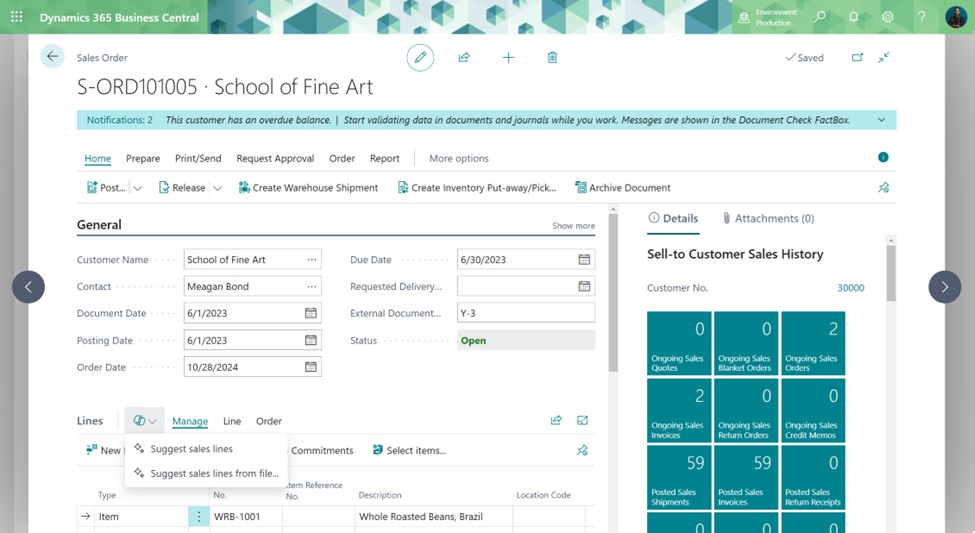

Practical Applications
Recurring Orders
- For customers who place repeat orders, Copilot ensures their typical purchases are pre-filled, saving time and effort for the sales team.
Complex Orders
- When dealing with large or detailed sales orders, Copilot simplifies the process by pulling in all necessary data automatically, ensuring no critical items are missed.
Upselling and Cross-Selling Opportunities
- Copilot can suggest related or complementary products based on historical sales patterns, helping sales teams increase order value.
Benefits for Businesses
Increased Efficiency
- Automating sales line creation significantly reduces the time spent on data entry, allowing sales teams to focus on higher-value activities like building customer relationships.
Improved Customer Experience
- Customers receive faster, more accurate orders tailored to their needs, enhancing satisfaction and loyalty.
Enhanced Accuracy
- The system leverages historical data and business rules, reducing errors and inconsistencies in sales orders.
Empowered Sales Teams
- By handling repetitive tasks, Copilot enables sales teams to operate more effectively, making them more productive and engaged.
How It Works in Practice
- Step 1: A salesperson starts a new sales order for a customer in Business Central.
- Step 2: Copilot analyzes the customer’s history, preferences, and current requirements by importing a list from text or email to generate a list of suggested sales lines.
- Step 3: The user reviews the suggestions, adjusts as needed, and finalizes the order.
The integration of Copilot into the sales workflow demonstrates Microsoft’s commitment to making Business Central smarter and more user-friendly. By blending AI with everyday tasks, businesses can achieve faster order processing, improved accuracy, and greater customer satisfaction—all with minimal effort. This feature is especially valuable for high-volume sales operations or companies with complex customer requirements.
Modern Search vs legacy search
The Modern Search feature in Microsoft Dynamics 365 Business Central Version 25 (2024 Release Wave 2) introduces a more intuitive, efficient, and user-friendly way to find information and navigate the system. It is a significant upgrade from the legacy search functionality, providing smarter and faster results tailored to users’ needs.
Key Features of Modern Search
Enhanced Search Algorithm
- Modern Search uses an advanced algorithm that provides more relevant results by understanding the context and intent behind the search query.
- It ranks results based on their relevance, ensuring that the most useful information appears first.
Type-Ahead Suggestions
- As users type in the search bar, suggestions appear in real-time, helping users refine their queries and locate what they need more quickly.
Search Across Multiple Areas
- Modern Search enables users to search not just for pages and reports but also for data, settings, and documentation. For example, you can find records like customers or items directly from the search bar.
Natural Language Processing (NLP)
- Users can enter queries in natural language, such as “create a sales order,” and the system understands and guides them to the appropriate action or page.
Refinement Filters
- Modern Search includes filters to help users narrow down results, such as by module, entity type, or recent usage, making it easier to find what they need in large datasets.
Performance Improvements
- Searches are faster and more responsive, even in environments with extensive data or configurations.
- Actionable Results
- Results are actionable, meaning users can directly open a page, start a process, or navigate to a record from the search results.
Differences Between Modern Search and Legacy Search
Aspect | Legacy Search | Modern Search |
Search Algorithm | Basic keyword matching, often yielding generic results. | Context-aware algorithm with relevance-based ranking. |
Scope of Search | Limited to pages, tasks, and reports. | Expands to include data, records, actions, and settings. |
Suggestions | No type-ahead suggestions. | Real-time suggestions appear as you type. |
Natural Language Support | Requires exact keywords or phrases. | Understands natural language queries. |
Filters | No filtering options. | Offers refinement filters to narrow down results. |
Speed | Slower in larger environments. | Optimized for speed and responsiveness. |
Actionable Results | Limited to navigation only. | Allows direct interaction with results. |
Usability | Requires more precision and familiarity with the system. | Intuitive, user-friendly, and more forgiving for casual users. |
Benefits of Modern Search
Saves Time
- Users can find what they’re looking for faster, improving productivity across all departments.
Improves User Experience
- Intuitive design and natural language support make it easier for new and casual users to navigate the system without needing extensive training.
Increases Accuracy
- More relevant and actionable results reduce the time spent searching for the right data or functionality.
Supports Complex Queries
- Advanced features like refinement filters and NLP allow users to handle more complex searches effortlessly.
Scales with Data
- Even in systems with extensive records and modules, Modern Search performs efficiently, making it future-proof for growing businesses.
Practical Example
- In Legacy Search, typing “customers with overdue payments” might yield irrelevant results because it lacks context and advanced parsing.
- In Modern Search, typing the same phrase would guide the user to a page or report related to overdue invoices or a filtered customer list.
The Modern Search feature in Business Central Version 25 marks a transformative leap from the legacy search system. With its smarter algorithms, broader scope, and intuitive design, Modern Search empowers users to navigate the platform more efficiently and focus on tasks that drive business growth. This enhancement not only improves productivity but also aligns with Microsoft’s broader vision of creating a seamless, intelligent business application ecosystem.
Conclusion
The Microsoft Business Central 2024 Release Wave 2 is packed with features that can help your business thrive in today’s competitive landscape. From enhanced financial reporting to advanced sustainability tracking, these updates are designed to streamline your operations and drive growth. The new subscription billing module and Copilot enhancements further add to the value, making Business Central an indispensable tool for modern businesses.
Ready to see how these new features can benefit your business? Contact Gem365.ca today to request a consultation. Our team of experts is here to help you leverage the power of Business Central 2024 Release Wave 2 to achieve your business goals.
Latest blog posts
Table of Contents
ERP Inventory Management Module: Features, Challenges, and Benefits


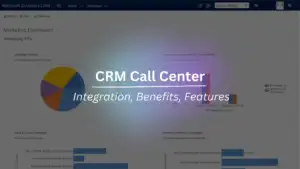

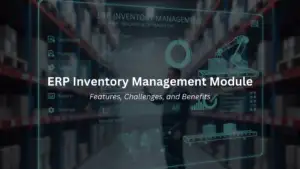

ERP Inventory Management Module: Features, Challenges, and Benefits


ERP Modules for Manufacturing: A Guide for Modern Production
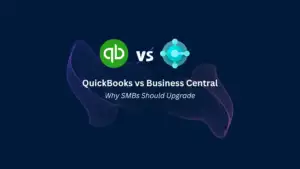



What Is EDI in ERP? A Guide for Manufacturers and Distributors


NAV to Business Central Migration: Avoid Data Loss
Migrating from Dynamics NAV to Business Central is a major step. This guide explains how to avoid data loss during migration, from cleaning and mapping data to testing and reconciliation, ensuring a secure and accurate upgrade path for finance, sales, and operations.


CRM Call Center: Integration, Benefits, Features
A CRM call center integrates customer data and AI tools to deliver faster, personalized support. From call logging to omnichannel service, it boosts resolution rates, agent productivity, and customer loyalty.


ERP Inventory Management Module: Features, Challenges, and Benefits
Learn how an ERP inventory management module improves accuracy, cuts costs, and supports compliance in manufacturing ERP and warehouse operations.


